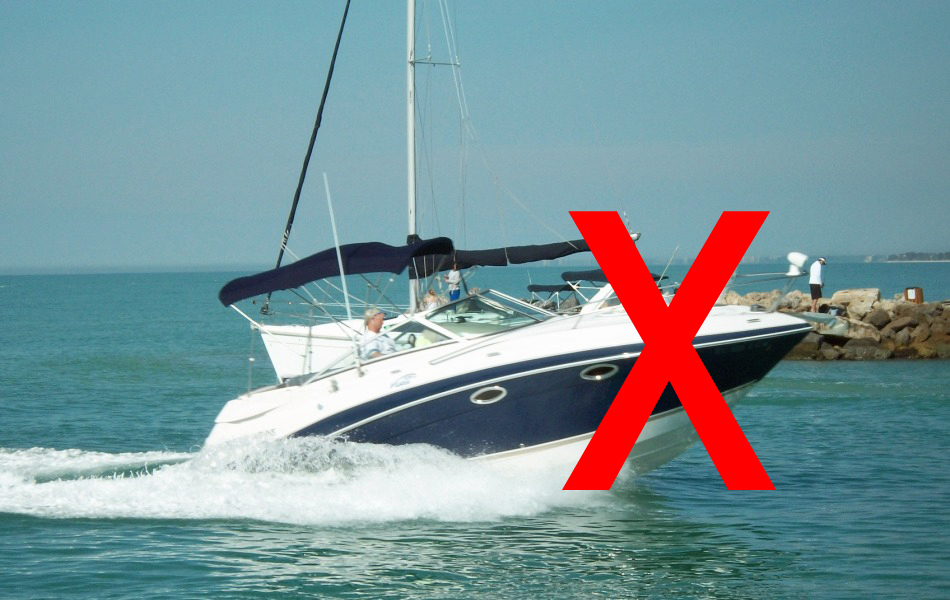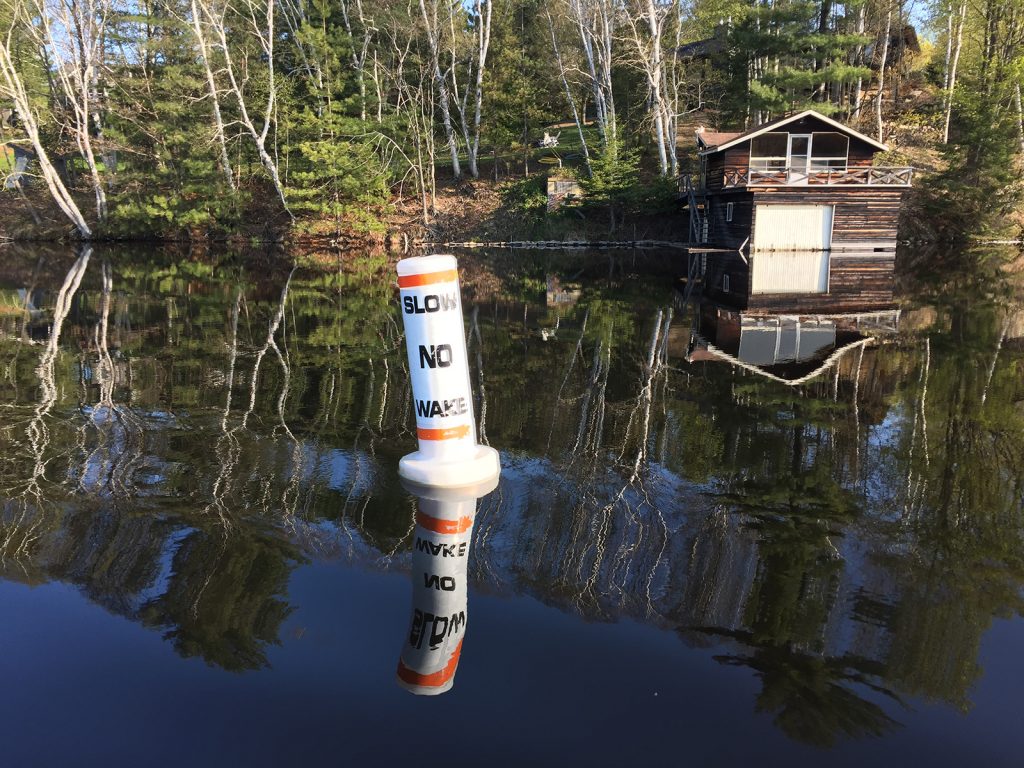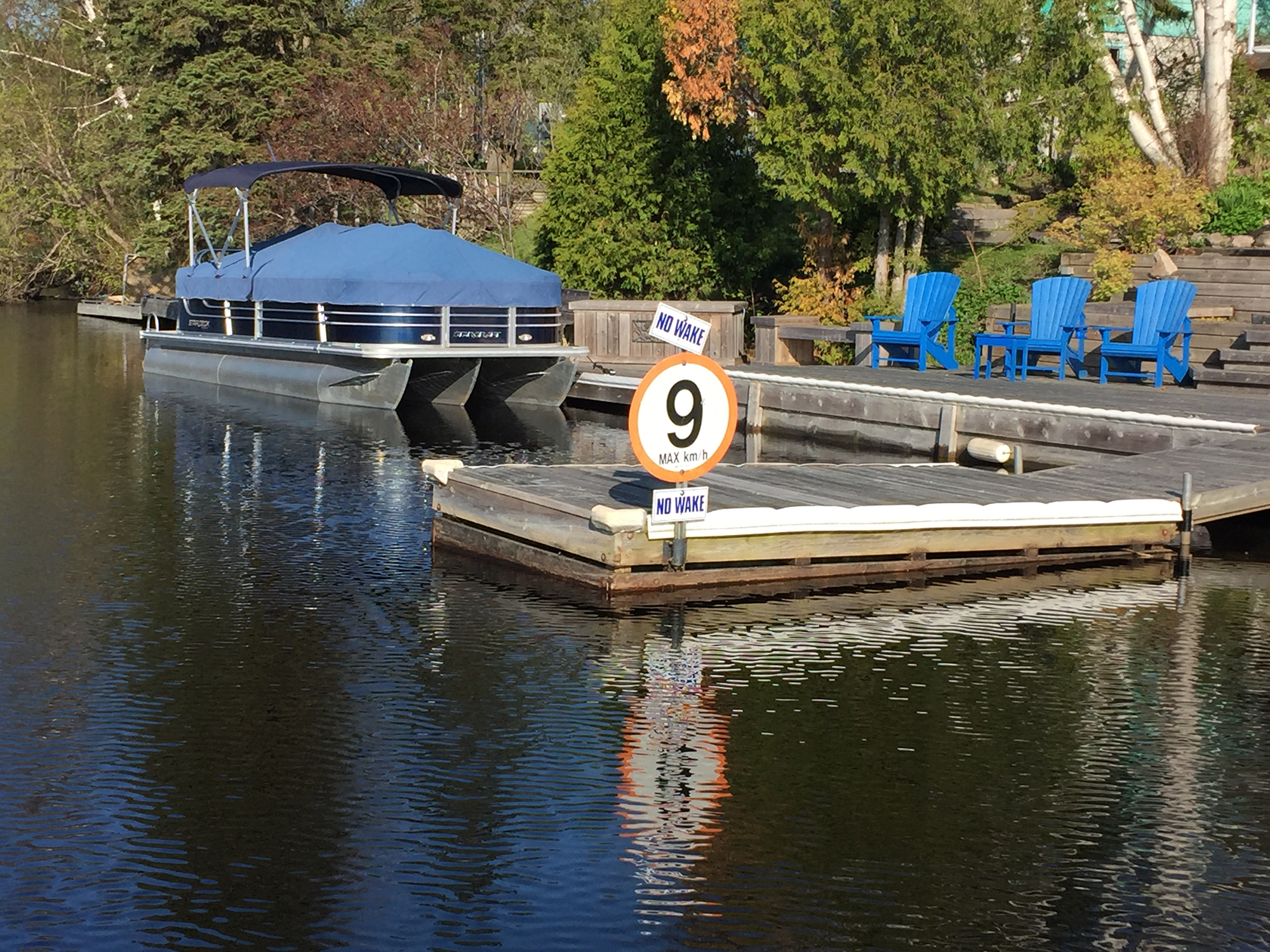Slow Down, Bow Down: control your wake!
Operating a boat with a throttle requires more than just skill. You must also be a responsible skipper who understands that poor judgement can negatively impact other boaters, property and the environment.
When an operator brings a boat into a confined area such as a marina, attention is often given more to what is in front of the boat than behind it. Everyone knows to slow down in these confined spaces, but some boats generate large, damaging wakes even at a slow speed. In Canada, boating regulations state that operators must slow down to 10 km/h when operating within 30 metres (approximately 100 feet) of shore. In a marina, we often see Dead Slow and No Wake signs, but this doesn’t always result in compliance. Way too often, I see boats coming into marinas bow-high and dragging a damaging wake, even though they may have throttled back and believe to be following Canadian speed regulations.

Not all boats generate wakes equally. Wake is generated by the hull, not the propeller. The bigger the boat, the bigger the wake. Speed certainly plays a factor, even when the boat is riding flat at 1000 rpm or less. Best advice I can give here is to repeat what I have said in earlier columns – know your boat.
Three tips for eliminating wake:
- Throttle back to idle and wait 10 seconds. This will allow the bow to drop and the stern to rise, thus leveling the boat. Once the boat is level, add just enough throttle to provide steerage. For most boats, that’s 1000 rpm or less. Watch the bow and make certain it doesn’t begin to lift as you add power.
- Use idle-speed only. Be in gear, but don’t add any power. This may mean you are working the wheel a bit more to hold your line, but it is what it is.
- Look behind you.

Boat speed
Common complaints by boaters is that their speedometer is marked in MPH, isn’t accurate, or they don’t have one. This is simply not a valid excuse. Slow down, level out, look behind you. When in doubt, operate at idle-speed.
On larger twin-engine boats over 50 ft, even idle speed can generate a wake. If this is your case, shift into neutral for a few seconds at a time to keep the speed down.

Be Aware!
Its a pet-peeve of mine that too many skippers are unaware of what is happening behind their boat, which is why I always emphasise the need for 360-degree situational awareness. Perform shoulder checks and work the throttle(s) accordingly. This also applies to operating in open water and your proximity to other boats, especially non-powered craft like canoes and stand-up paddle boards. Always keep a safe distance – it’s the law.
Keyword : best boat, Best boat buying website, best boat marina website, best boat travel website, best place to rent a boat, boat accessories, boat angler, boat boondocking, boat buyers guide, boat camper, boat camping, boat dealers, boat DIY, boat Fishing, boat Fixer, boat handling, boat Home, boat information, boat insurance, Boat Maintenance, boat marinas, boat marinas in Alberta, boat marinas in BC, boat marinas in Canada, boat marinas in Manitoba, boat marinas in Saskatchewan, boat marinas in the USA, boat marinas near me, boat products, boat rentals, boat repair, boat road test, boat sharing, boat sites near me, boat supplies, boat Tech, boat tips, boat touring, boat trade, boat Travel, boat traveling, boat travelling, boat vacation, boat vacation cost, boat websites Canada, boating Canada, Boating Canada’s Boat Lifestyle Magazine, Boating Lifestyle Magazine, boating website, Canadian marina websites, expert boat information, find a boat dealer, how much does a boat cost, how much does marina cost, how to choose a boat, how to drive a boat, marina products, marina supplies, motor boat, power boating magazine, top boat website, used boat reviews best boat, Best boat buying website, best boat marina website, best boat travel website, best place to rent a boat, boat accessories, boat angler, boat boondocking, boat buyers guide, boat camper, boat camping, boat dealers, boat DIY, boat Fishing, boat Fixer, boat handling, boat Home, boat information, boat insurance, Boat Maintenance, boat marinas, boat marinas in Alberta, boat marinas in BC, boat marinas in Canada, boat marinas in Manitoba, boat marinas in Saskatchewan, boat marinas in the USA, boat marinas near me, boat products, boat rentals, boat repair, boat road test, boat sharing, boat sites near me, boat supplies, boat Tech, boat tips, boat touring, boat trade, boat Travel, boat traveling, boat travelling, boat vacation, boat vacation cost, boat websites Canada, boating Canada, Boating Canada’s Boat Lifestyle Magazine, Boating Lifestyle Magazine, boating website, Canadian marina websites, expert boat information, find a boat dealer, how much does a boat cost, how much does marina cost, how to choose a boat, how to drive a boat, marina products, marina supplies, motor boat, power boating magazine, top boat website, used boat reviews
